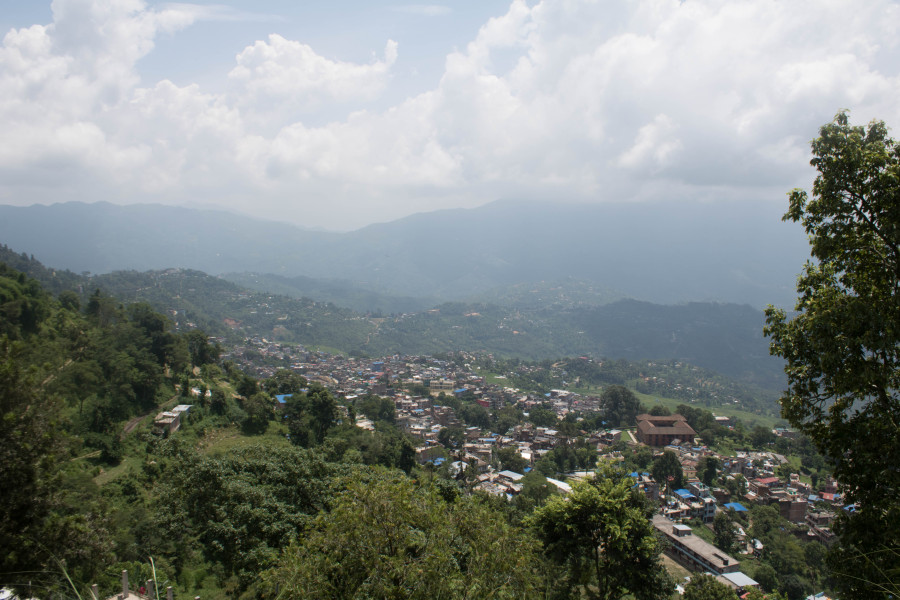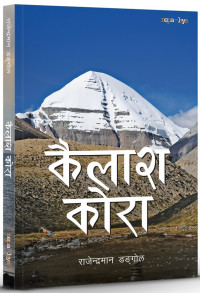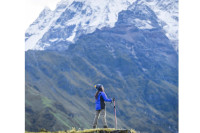Travel
Gorkha’s hills are full of history but unlike its past, it is a place for peace
The quaint town is less frequented by tourists, but that’s what makes it a must-visit for nature lovers.
Thomas Heaton
Clicking and praying a decent picture might appear in my camera, shots were being fired at everything. But, sometime during the camera spree, it seems I angered one of the priests at Gorkha Durbar. While my general understanding of body language hinted at some things, my Nepali language inadequacies didn’t help much either. I could understand I had upset the man. Perhaps I took a photo of something I shouldn’t have, or perhaps I shouldn’t have been taking photos at all.
Standing sheepishly, prostrated by the blazing sun, and the priest blaring at this sweaty sheepish foreigner, it was only after another godman’s quiet placating that eased his mind. “He wanted to educate you on Nepal,” the spectacled man told me. “He said your head was cracked.”
Perhaps my head was cracked, taking photos in a place so sacred to Nepal. After all, this is the birthplace of Nepal's first unifying force, King Prithvi Narayan Shah, and has inextricable links to the dauntless Gurkha soldiers. That considered, the area seems less valued or visited by tourists, and there doesn’t seem to be the sheer amount of signage—and charges—one might encounter elsewhere. The road is relatively well-paved, and the drive doesn’t take much longer than it does from Prithvi Highway to Bandipur. While it may not have fancier hotels or many restaurants, it’s peaceful and the views sprawl further than the eye can see.
From below, however, at Gorkha Bazaar, the durbar is completely hidden by the forest. There isn't so much of a hint that on the precipice of the hill sits the birthplace of King Prithvi. All that can be seen is house-studded farmland and the forest behind—the landscape fades from urban to natural. Perhaps past the 1,000-step mark, the trees start to provide a canopy and it’s evident you’re close, as the greenery shelters the final few hundred steps of the journey up to Gorkha Durbar. Monkeys swing from branch to branch, while below locals sell various things for prasad, and random trinkets for tourists.

But from the top, sitting on the tactical throne of the hill, Gorkha Durbar has a full 360- degree view—worthy of a king. In the winter, one might get a view of Manaslu, Ganesh and Annapurna, and in the warmer months, a view of the city and the Trisuli Valley is what you have to settle for, but that doesn’t mean it’s bad in any way. The palace and its temples sit some 300 metres above the old city, and is connected by a house-lined 1,500 cobbled steps.
With the sun blaring down, the small temple on the other side of the complex has a sarangi as its soundtrack. A friendly older fellow expertly rocks his bow to and fro, sitting under the shade of the ramparts, smiling as people dribble in and out of the area and drop odd notes into his hat. When people pop in, they make their offerings, and head out, with relative efficiency. The puja is performed, coconuts cracked, and the monkey pilfers their fill before tossing them on the ground below—one worker cops a half-shell to the head. Occasionally he jumps up to swat away monkeys goading visitors with his bow.
The man’s music is shrouded however, under the consistent tinker of hammers on bricks and saws through the wood. Gorkha Durbar is still being reconstructed, with the original home in ruins. And while the area is stunning, and the views amazing, the brunt of information and education is housed below, in Gorkha Museum, a hollow terracotta square dwarfing the rest of the area’s buildings.
Built in 1835 on order of King Rajendra Bikram Shah, the typical Newar palace sits in the midst of 3.5 hectares of cow-preened gardens above the city’s bus park. The museum, once known as Tallo Durbar (lower palace), was opened in its current form in 1974, and plays host to a nominal but interesting collection of artefacts and plenty of information on Shah dynasty—it’s visited by thousands each year, many of whom are students.

Compared to the sites above, the building is grandiose and pristine. Two antique cannons sit at either side of the entrance, and the courtyard is largely sparse except for the photos in the small grottos that lead inside. Inside, visitors take one full lap of the building, there are several galleries that touch on various facets of the country’s past. It seems each king of Gorkha had a very specific token of their reign that was remembered—King Ram Shah settled disputes under a tree, called Panche Chautara, and standardised weight measurements; King Rudra Shah built the deathly stairwell to Hanuman Bhanjyang; and, of course, King Prithvi was the man who united Nepal.
While the museum is somewhat enlightening, the gardens outside play host to several chautaras and a dilapidated children’s playground. The grounds are clean, relatively, and peaceful and it would be easy to let the day go by while reading a book or just relaxing. The bazaar on the hill is quiet, and plays host to sleepy locals eating at a small handful of local eateries or slurping sweet and milky tea.
But back at the top of the hill, uncomfortably stuck in place as I get told off by the priest, he starts to mutter and walks away. The other man, who assuaged his compatriot’s frustrations, gives me a bemused look as I thank him. Walking back down the stairs, to make the journey back to the town centre, I look up at a small and faded sign. It’s a camera, with a bold red stripe struck through it. It might have been the heat, it might have been my legs, but something must have cracked my head because I swear I never saw it before.
***
What do you think?
Dear reader, we’d like to hear from you. We regularly publish letters to the editor on contemporary issues or direct responses to something the Post has recently published. Please send your letters to [email protected] with "Letter to the Editor" in the subject line. Please include your name, location, and a contact address so one of our editors can reach out to you.




 13.12°C Kathmandu
13.12°C Kathmandu










